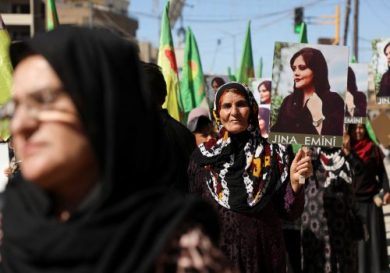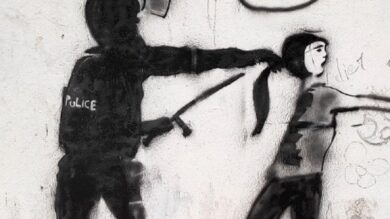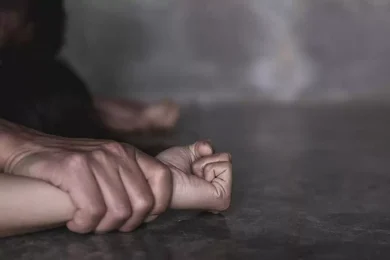In the face of authoritarianism, art often becomes more than expression—it becomes resistance. Nowhere is this more evident than in Iran, where decades of repression, censorship, and state violence have fueled a vibrant culture of artistic defiance. From protest murals and graffiti to underground films, music, photography, and digital media, Iranian artists are not just telling stories—they are challenging power.
Amidst the brutality of the Islamic Revolutionary Guard Corps (IRGC) and government crackdowns, artists have become activists, using their work to document injustice, honor the victims, and inspire a movement. In today’s Iran, art is not silent—it shouts back. This article explores how art fuels resistance, preserves collective memory, and unites Iranians and global allies under the banner of freedom and human dignity.
1. Art as Protest: A Tradition of Visual Defiance
Graffiti, Street Art & Murals
In cities like Tehran, Shiraz, and Sanandaj, protest art has appeared on walls and alleyways, often overnight. These anonymous works portray martyrs like Mahsa Amini, depict the oppressive reach of the IRGC, or use symbolic imagery like burning hijabs or empty eyes to signify censorship and mourning.
Though authorities quickly paint over these images, artists continue—turning walls into battlegrounds of expression.
Photography & Protest Documentation
Iranian photographers, often working underground, have risked everything to capture images of:
• Protesters facing riot police.
• Mothers holding photos of slain sons and daughters.
• Streets lit by candles in defiance of mourning bans.
These photos are smuggled out and spread on social media, forming a visual archive of resistance that cannot be erased.
2. Music: The Rhythm of Revolution
Underground Bands and Protest Songs
The Iranian regime has long censored Western music and female vocalists, but the underground music scene thrives:
• Hip hop artists rap about poverty, justice, and resistance.
• Female singers post forbidden vocals on Instagram and Telegram.
• Protest anthems like “Baraye” by Shervin Hajipour—which went viral in 2022—express the collective pain and hope of the Iranian people.
These songs are banned, their creators arrested, but their impact echoes across generations.
3. Film and Theater: Telling the Forbidden Stories
Cinema as Testimony
Despite intense censorship, Iranian filmmakers like Jafar Panahi, Mohammad Rasoulof, and Asghar Farhadi have used the medium to subtly or directly criticize the regime.
Many face house arrest or are banned from filmmaking. But with smartphones, smuggled footage, and international festivals, their stories still reach the world.
Films explore themes such as:
• State surveillance
• Gender apartheid
• Moral hypocrisy of the IRGC
• Everyday resistance
Theater & Performance Art
In both private homes and underground venues, performance art explores themes of trauma, imprisonment, and freedom. Often symbolic, these pieces navigate censorship while delivering powerful emotional blows to audiences starved of truth.
4. Visual Arts and Digital Design
Illustration, Animation & Digital Media
Younger artists are turning to digital platforms to spread politically charged content. With limited access to physical galleries, Instagram, Twitter, and Telegram become exhibition spaces.
Common themes:
• Women removing hijabs.
• Symbols of martyrdom (blood, white flowers, the Persian lion).
• Visual metaphors for censorship (taped mouths, blindfolded eyes).
Digital art not only communicates messages but mobilizes protest by creating shareable, viral symbols of resistance.
5. Women Artists: Resistance Through Visibility
Women face the most restrictions in Iran, yet they are also at the forefront of artistic defiance. Many have turned to visual art, fashion, and poetry to reclaim their bodies and voices.
Examples include:
• Unveiled portraits that humanize hijab resistance.
• Body art and dance (shared anonymously on social media).
• Fashion activism, where designers incorporate symbols of protest into clothing.
By existing visibly, women artists challenge state narratives about femininity, purity, and submission.
6. Satire and Cartoons: Humor as Weapon
Satirical cartoons have long played a role in Iran’s political landscape. Artists like Mana Neyestani have used cartoons to:
• Mock IRGC leadership.
• Highlight absurdities in censorship laws.
• Expose state corruption.
Satire allows artists to sidestep direct confrontation while undermining authority through humor—an especially subversive tactic in a highly controlled society.
7. Diaspora Artists: Resistance Across Borders
Iranian artists in the diaspora—across Europe, the U.S., and Canada—have used their freedom to:
• Exhibit banned works.
• Organize global protest art campaigns.
• Fundraise for activists and families of political prisoners.
Diaspora art bridges the gap between Iran and the world, ensuring that the regime’s crimes are not forgotten, and Iran’s cultural soul remains intact.
8. The Risk of Creating Art in Iran
Artistic resistance in Iran comes with a cost:
• Imprisonment (e.g., filmmaker Jafar Panahi, rapper Toomaj Salehi).
• Exile or forced silence.
• Surveillance of artists’ families and collaborators.
Despite these risks, artists persist. Why? Because in Iran, art is survival. It is hope, truth, and resistance in one.
9. Art as Healing: Processing Trauma Through Creation
Beyond protest, art serves as therapy in a country plagued by:
• Generational trauma.
• State violence.
• Constant fear.
Painting, music, writing, and sculpture give people ways to process grief—especially after protests turn deadly. Memorial murals, poems for lost children, and musical laments have become tools of collective healing.
10. The Global Impact: Inspiring Change Beyond Borders
Iranian resistance art has:
• Won international awards and media coverage.
• Inspired solidarity protests worldwide.
• Educated global audiences about Iran’s struggle for freedom.
In Berlin, Toronto, and Paris, murals and galleries have featured Iranian resistance works. International artists have created solidarity pieces, and museums have hosted exhibitions dedicated to the uprising.
Conclusion: Art Will Not Be Silenced
The Islamic Republic can arrest artists, burn paintings, censor lyrics, and ban exhibitions—but it cannot stop the message.
Iranian artists, especially women, are proving that creativity is power. That imagination is a weapon, and that when people can no longer scream, they will paint, sing, write, and perform their way to freedom.
As the cry “Women, Life, Freedom” echoes around the world, Iranian art ensures that the truth of this movement lives on—beautifully, bravely, and without permission.
Join Our Newsletter!
Stay informed with the latest updates, news, and ways to take action in the fight for justice and global security. Sign up now to get updates delivered straight to your inbox!





